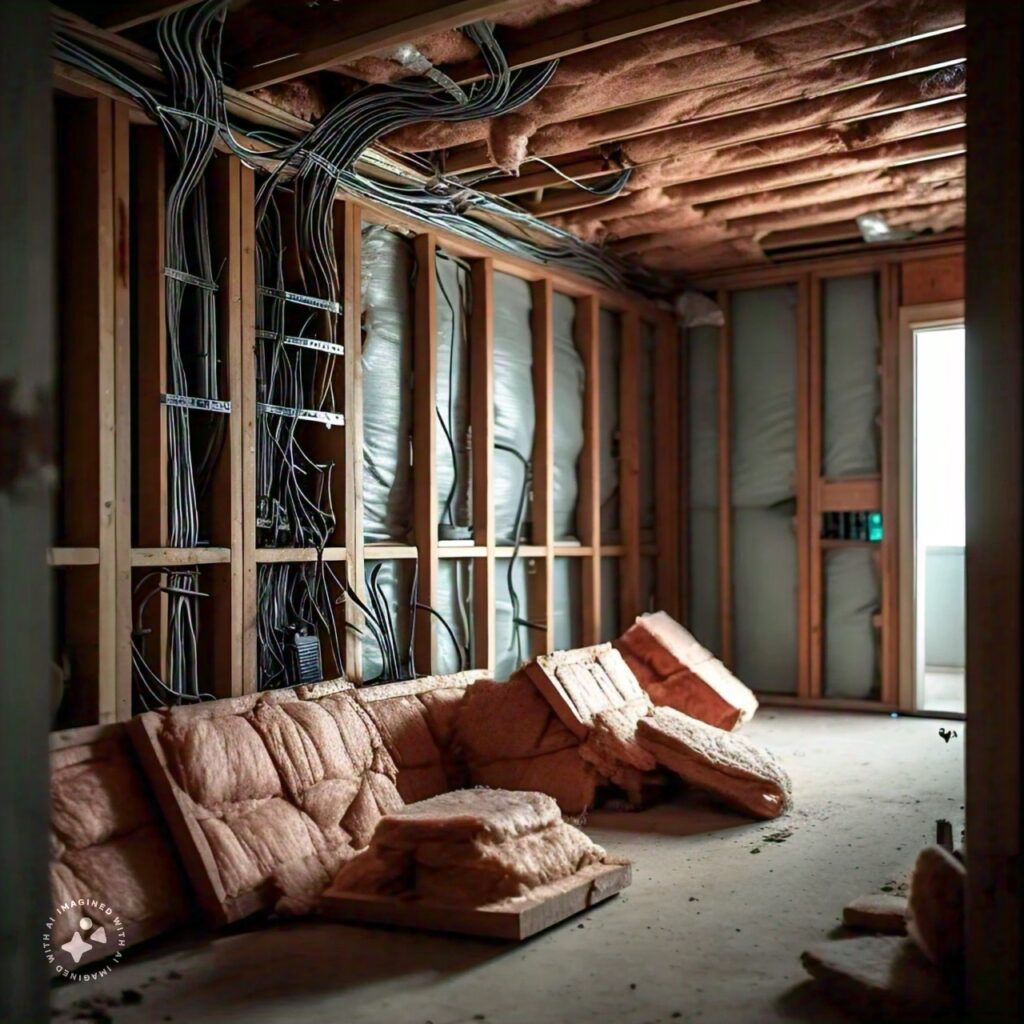Bringing home new furniture in Singapore is always exciting, but dealing with that potent “new furniture smell” can be a bit of a downer.
It’s that overpowering scent that hits you when you unwrap your latest purchase, and it’s not exactly a breath of fresh air.
Understanding why this happens and how to tackle it is key to making your new addition feel truly at home.
Quick Answer:
To remove bad smells from furniture, try these effective methods: proper ventilation by opening windows, using activated charcoal or baking soda to absorb odors, spraying a vinegar solution to neutralize smells, and exposing the furniture to sunlight.
Causes of the Bad Smell In New Furniture

The smell in new furniture comes from volatile organic compounds (VOCs) emitted by materials like adhesives, paints, stains, upholstery fabrics, and synthetics. Common VOCs found in furniture include formaldehyde, benzene, and toluene.
Dangers Associated with the Smell in New Furniture

Although the smell coming from new or renovated furniture is not inherently dangerous in small quantities, prolonged exposure to high levels of VOCs can pose health risks
- Respiratory Issues: VOCs emitted by new furniture can irritate the respiratory system, leading to symptoms such as coughing, wheezing, and shortness of breath. Individuals with asthma or other respiratory conditions may experience exacerbation of their symptoms.
- Headaches and Dizziness: Breathing in high concentrations of VOCs can cause headaches, dizziness, and nausea. Prolonged exposure may even result in more severe neurological effects.
- Allergic Reactions: Some people may be sensitive or allergic to certain VOCs present in new furniture. Skin rashes, itching, and allergic rhinitis (hay fever) are common allergic reactions that may occur.
- Long-term Health Risks: Long-term exposure to high levels of VOCs has been associated with more serious health issues, including an increased risk of cancer and damage to the liver, kidneys, and central nervous system.
Duration of Odor Bad Odor In New Wood Furniture

The duration of the smell in new furniture depends on various factors, including the type and amount of VOCs emitted, ventilation in the room, and environmental conditions.
In general, the odor may dissipate within a few days to a few weeks with proper ventilation and treatment methods.
- Materials Used: Furniture made from solid wood emits fewer VOCs and may have a milder odor compared to pieces made from composite materials or synthetic fabrics.
- Ventilation: Proper ventilation expedites off-gassing. Opening windows and doors facilitates air circulation, hastening the dissipation of odors.
- Environmental Factors: Temperature and humidity influence off-gassing rates. Warmer temperatures and higher humidity levels accelerate the process, while cooler temperatures and lower humidity levels slow it down.
- Treatment Methods: Utilizing methods such as airing out the furniture, employing absorbents like activated charcoal or baking soda, and applying vinegar solutions neutralizes odors and shortens their duration.
| Time Frame | Description |
|---|---|
| Within a week | Initial strong odor may be noticeable, especially in enclosed spaces or rooms with poor ventilation. |
| 1-2 weeks | Odor gradually begins to dissipate as volatile organic compounds (VOCs) off-gas from the wood and air out of the furniture. |
| 2-4 weeks | Significant reduction in odor intensity; however, some residual smell may still linger, particularly in upholstered or densely finished wood furniture. |
| 1-2 months | Odor continues to diminish, becoming faint and less noticeable over time. Regular airing out of the furniture and use of odor-absorbing methods can expedite the process. |
| 2-3 months | Lingering odor becomes minimal or non-existent, with the furniture reaching a point where it no longer emits noticeable smells. Proper ventilation and maintenance contribute to complete odor elimination. |
5 Ways to Quickly Remove Bad Odor From New Furniture
1. Proper Ventilation
One of the simplest yet most effective ways to get rid of the new furniture smell is through proper ventilation. Open windows and doors to allow fresh air to circulate throughout the room. If possible, position fans to help speed up the process. This method helps to disperse the odor and encourages the release of volatile organic compounds (VOCs) responsible for the smell.
2. Activated Charcoal can Remove Smell From Furniture

Activated charcoal is a natural odor absorber that can work wonders in eliminating unpleasant smells, including those from new furniture.
Place bowls of activated charcoal near the furniture or use charcoal sachets tucked away in drawers and cabinets. Over time, the charcoal will absorb the odor, leaving your space smelling fresh and clean.
3. Baking Soda can Also Reduce Bad Smell From Furniture

Baking soda is another household staple known for its odor-neutralizing properties. Sprinkle baking soda over upholstered areas of the furniture and let it sit for a few hours before vacuuming it off.
You can also place open containers of baking soda inside drawers and cabinets to absorb lingering smells. This method is safe, affordable, and effective.
4. White Vinegar Solution can also Aid Removing bad odor from Furniture

You know, vinegar is a versatile cleaning agent that can also help eliminate odors from new furniture. Mix equal parts of water and white vinegar in a spray bottle and lightly mist the furniture. Allow the solution to air dry.
Vinegar helps neutralize odors without leaving behind a strong scent of its own. Plus, it’s safe to use on most types of furniture surfaces.
5. Sunlight Exposure can remove bad smell from newly painted Furniture

Direct sunlight can work wonders in breaking down VOCs and eliminating odors from new furniture. If possible, move the furniture outdoors on a sunny day and let it sit for several hours.
The UV rays from the sun help to neutralize the odor-causing compounds, leaving your furniture smelling fresher. Just be mindful of prolonged exposure to sunlight, especially for delicate materials.

